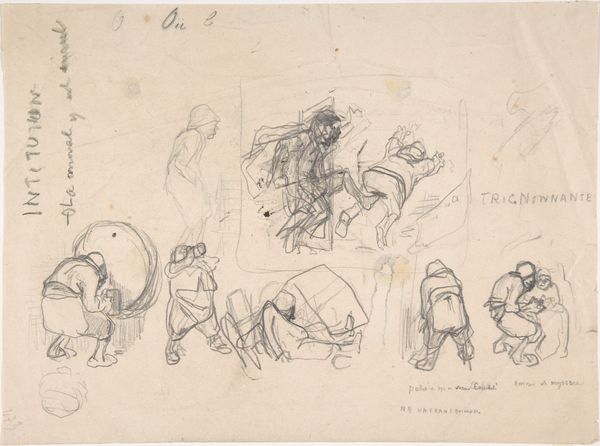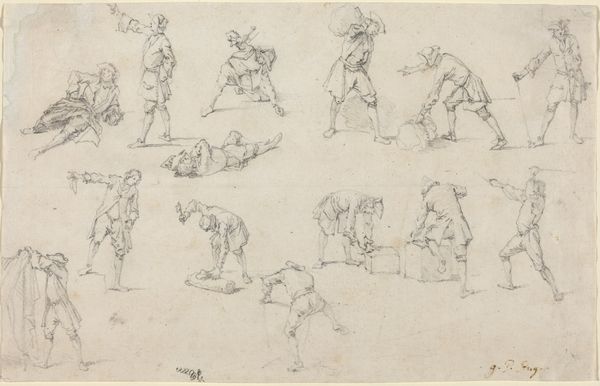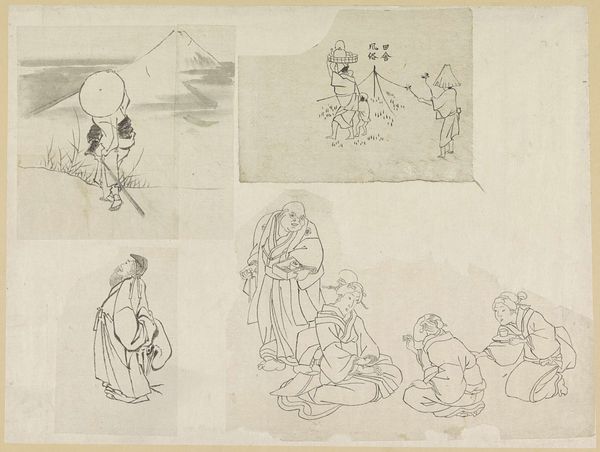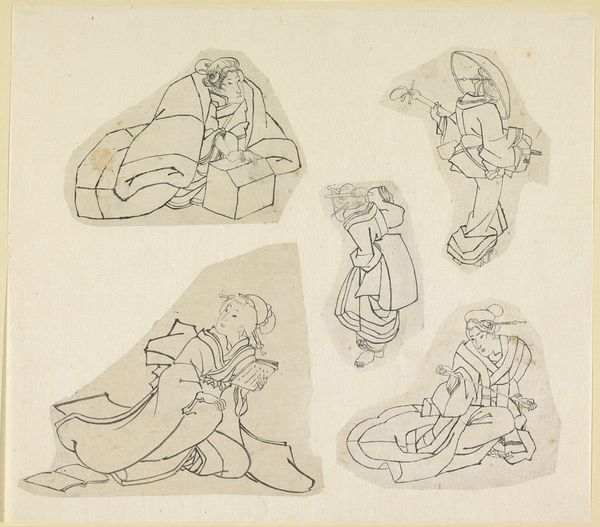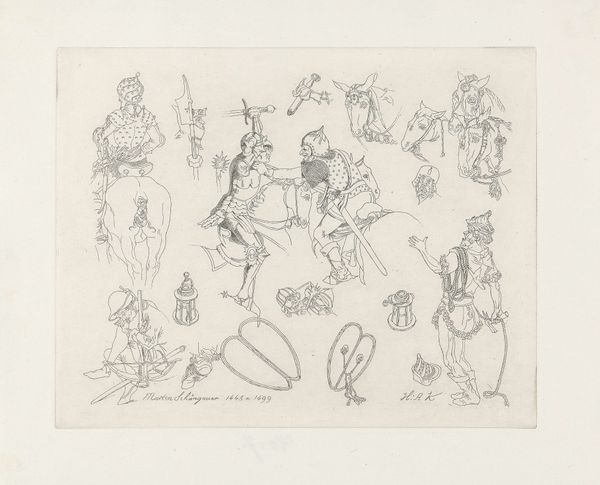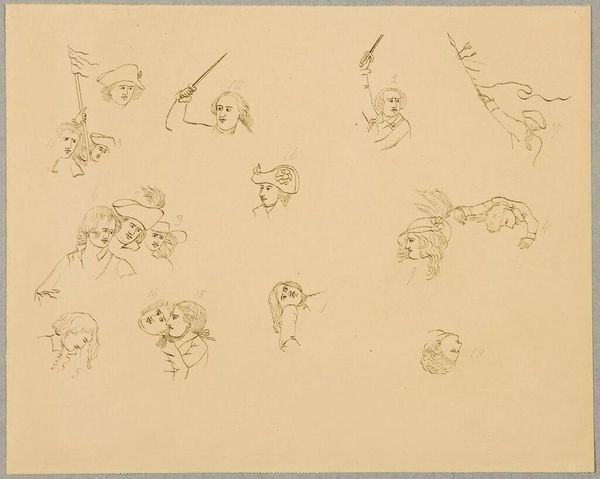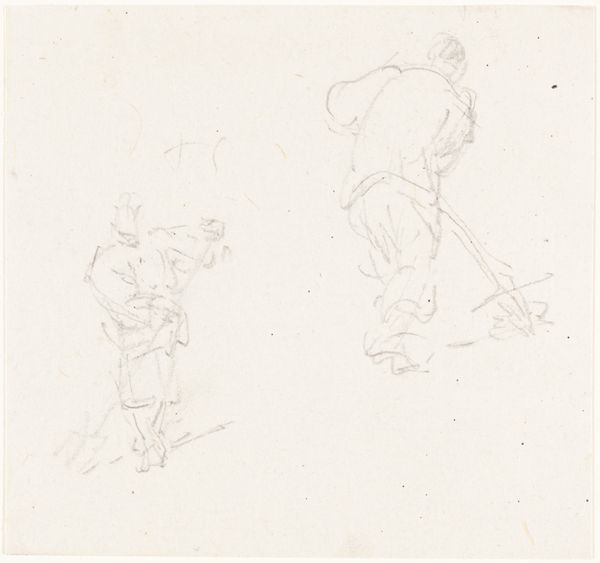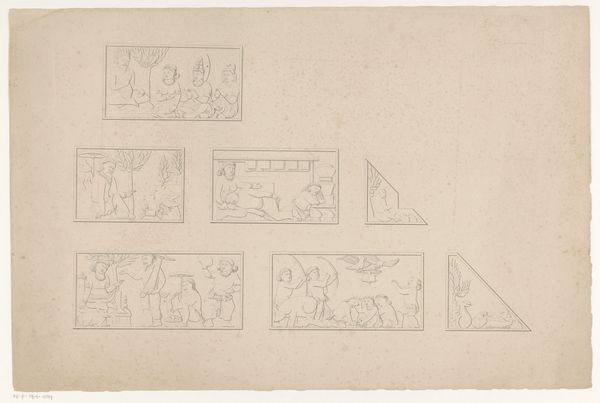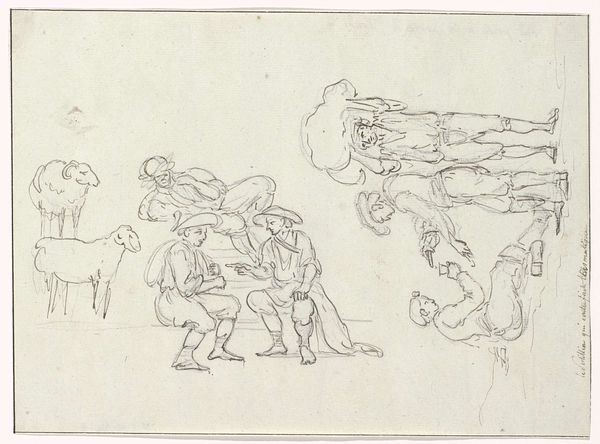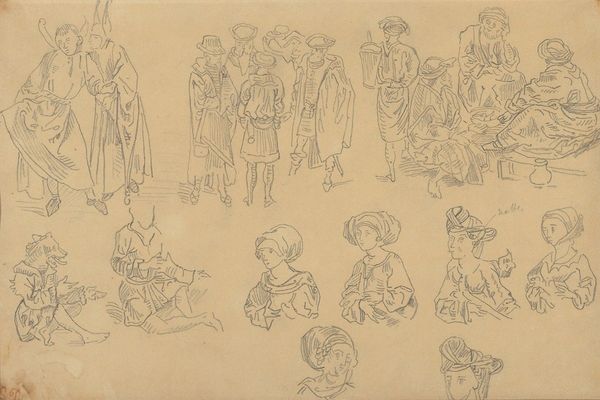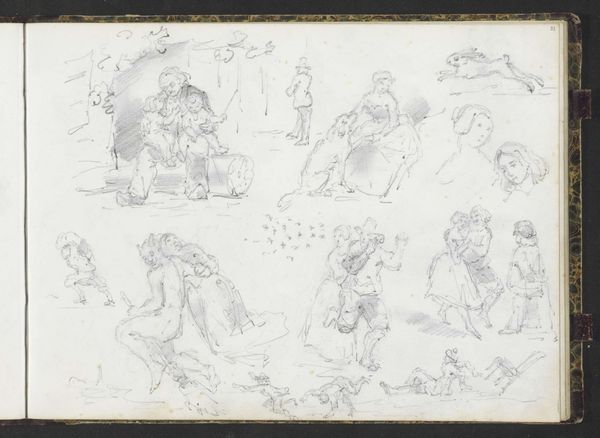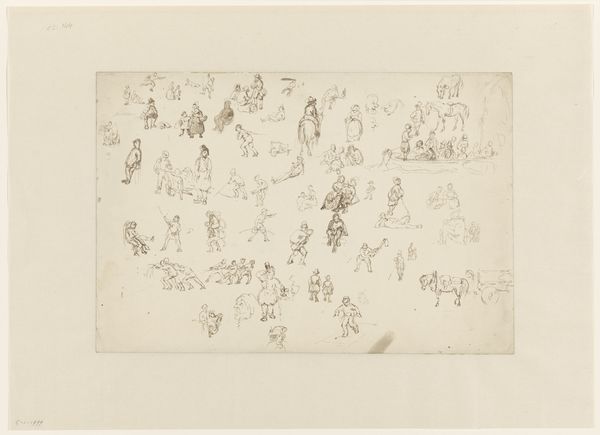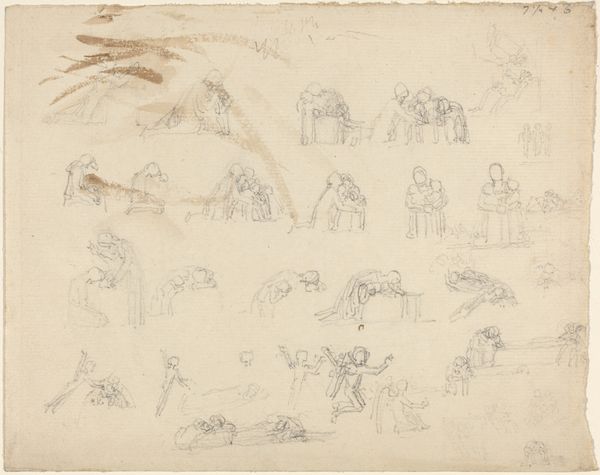
drawing, paper, ink
#
portrait
#
drawing
#
asian-art
#
ukiyo-e
#
figuration
#
paper
#
ink
#
line
#
genre-painting
Dimensions: height 197 mm, width 294 mm
Copyright: Rijks Museum: Open Domain
Editor: So here we have "Eleven Different Depictions of People" by Katsushika Hokusai, sometime between 1800 and 1900. It’s ink on paper. I’m struck by how sketch-like it feels, like a page from a preparatory drawing book. What's your read on this, seeing how it’s almost mass produced now for consumption in a museum setting? Curator: Precisely. It's critical to consider this work not as some rarefied expression of individual genius, but within the framework of its production. These drawings were part of the Ukiyo-e tradition. Think of it as a commercial art—woodblock prints for mass consumption by a growing urban class. The paper and ink themselves represent a network of labor and trade. Look closely at how Hokusai uses line, quickly and efficiently to suggest form and movement. Editor: That makes a lot of sense. You are suggesting that the essence is found more in its historical production, not the artistic technique? Curator: Yes. And consider the "eleven different depictions." This suggests a range of social types and activities meant for a broad audience. What does this accessibility mean to the traditional separation between ‘high art’ and everyday imagery? Ukiyo-e was part of a culture of consumerism. Editor: So the subject matter itself also relates to its commodification? People are the material in a sense. Curator: Precisely! We can then think about the depictions of people not merely as representations, but as reflections of social roles that could be easily distributed and consumed by the population. Editor: I never considered the images as a social "product," something almost "churned out," and not the results of fine-art intention. It adds another dimension to it that I never thought about. Curator: Absolutely! Considering art as a product reveals so much about the society that created it.
Comments
No comments
Be the first to comment and join the conversation on the ultimate creative platform.
